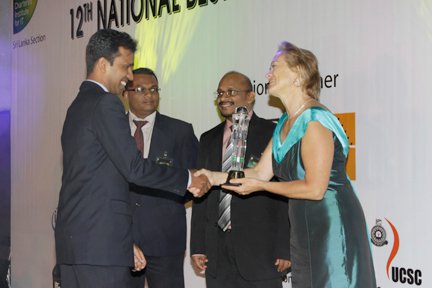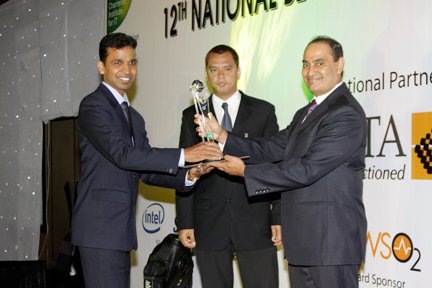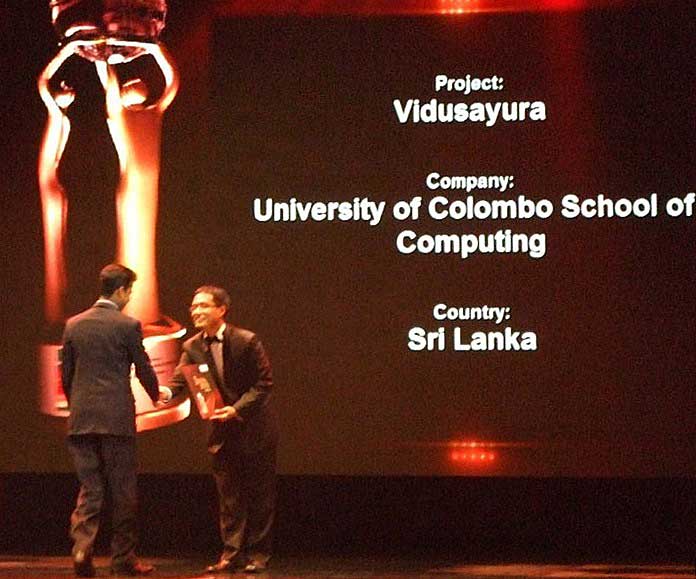Vidusayura Ship Simulation System
Vidusayura is development of a virtual learning and training environment for maritime education which allows simulating ship models under complicated environment conditions such as wind, wave and sea currents. It can compose six degrees of freedom ship motions (pitch, heave, roll, surge, sway, and yaw) with respect to rudder, throttle and environment conditions.Vidusayura is development of a virtual learning and training environment for maritime education which allows simulating ship models under complicated environment conditions such as wind, wave and sea currents. It can compose six degrees of freedom ship motions (pitch, heave, roll, surge, sway, and yaw) with respect to rudder, throttle and environment conditions.Conventional maritime classroom lectures can only explain ship’s individual phenomena one by one but they are occurring simultaneously so that it is not easy to teach and learn properly. But by using this proposed virtual environment ship’s, various phenomena which are occurring simultaneously can be explained easily. So that proposed virtual environment can be used as a teaching material to demonstrate ships motions under different environment conditions at classroom lectures. Trainees can use this virtual environment and define various environment conditions and study ship motions at their own pace.
Ship simulations has been used as a tool for training purposes, but it is now expected to be a teaching material to support lectures in a classroom at naval training institutions. In subjects involving ship-handling theory, not only ship-handling skills but also a theoretical understanding of ship motions is essential. Experience gained through this kind of virtual environment enables students to understand ship motions and the dynamic mechanism behind the generation of ship motions.Simulation of ocean surface vehicle under various conditions has been used in ship simulators for naval training, ship hull designing, simulating military science and entertainment activities such as computer games. The motion of a floating rigid body in ocean surface can be specified by Newton’s laws, fluid dynamics and other basic physics, but it is extremely complicated and difficult. All six possible degrees of freedom (6DOF) motions of a ship can be illustrated in Figure 1. Surge, heave, and sway are translational motions. Roll, yaw, and pitch are rotational motions. Ship maneuvering characteristics consist with a variety of phenomena occurring simultaneously in short time duration, including drift, turning, speed reduction, displacement of pivoting point, drift angle, heading, etc. But lectures in a conventional classroom can only explain these individual phenomena, one by one and it is not easy to correctly understand that phenomena. However this virtual learning and training environment is capable of processing a variety of dynamic data and predict ship’s motions into a visually understandable format. Virtual ship simulation system is based on mathematical ship model algorithms, assumptions, and limitations. In the context of today’s world, there are many ship simulation systems with three degrees of freedom and four degrees of freedom but it is difficult to find six degrees of freedom ship simulation systems focused on environmental disturbances such as sea wave, wind and sea current. There are many commercial ship simulation systems with six degrees of freedom such as Transas and Oceaniccorp . These commercial ship Simulators provides versatile and realistic ship simulation for maritime teaching, learning, assessment and research but those systems are extremely expensive, too complicated and proprietary.
Experimental results show that the proposed framework is very effective for virtual learning and training environment. It can form real-time six degrees of freedom ship motions under various conditions so that it can be scalable and configurable to industry standard invention. In this Vidusayura, we used our own algorithms and constrain in order to customize each and every building block to meet our requirement. This also has the ability to create tactical scenarios and teach a trainee how to react against each and every scenario. Moreover, through the virtual learning and training environment, students can create different scenarios (within different difficulty levels)


Merit Award International Asia Pacific ICT Alliance (APICTA) Awards 2010 